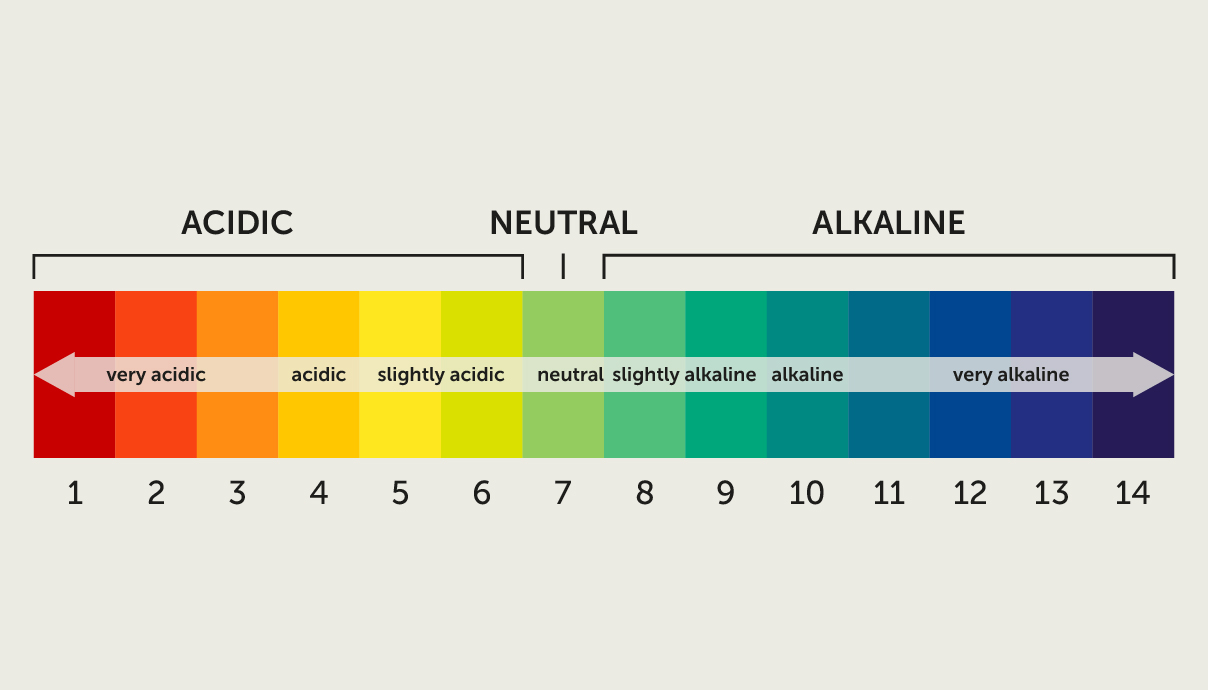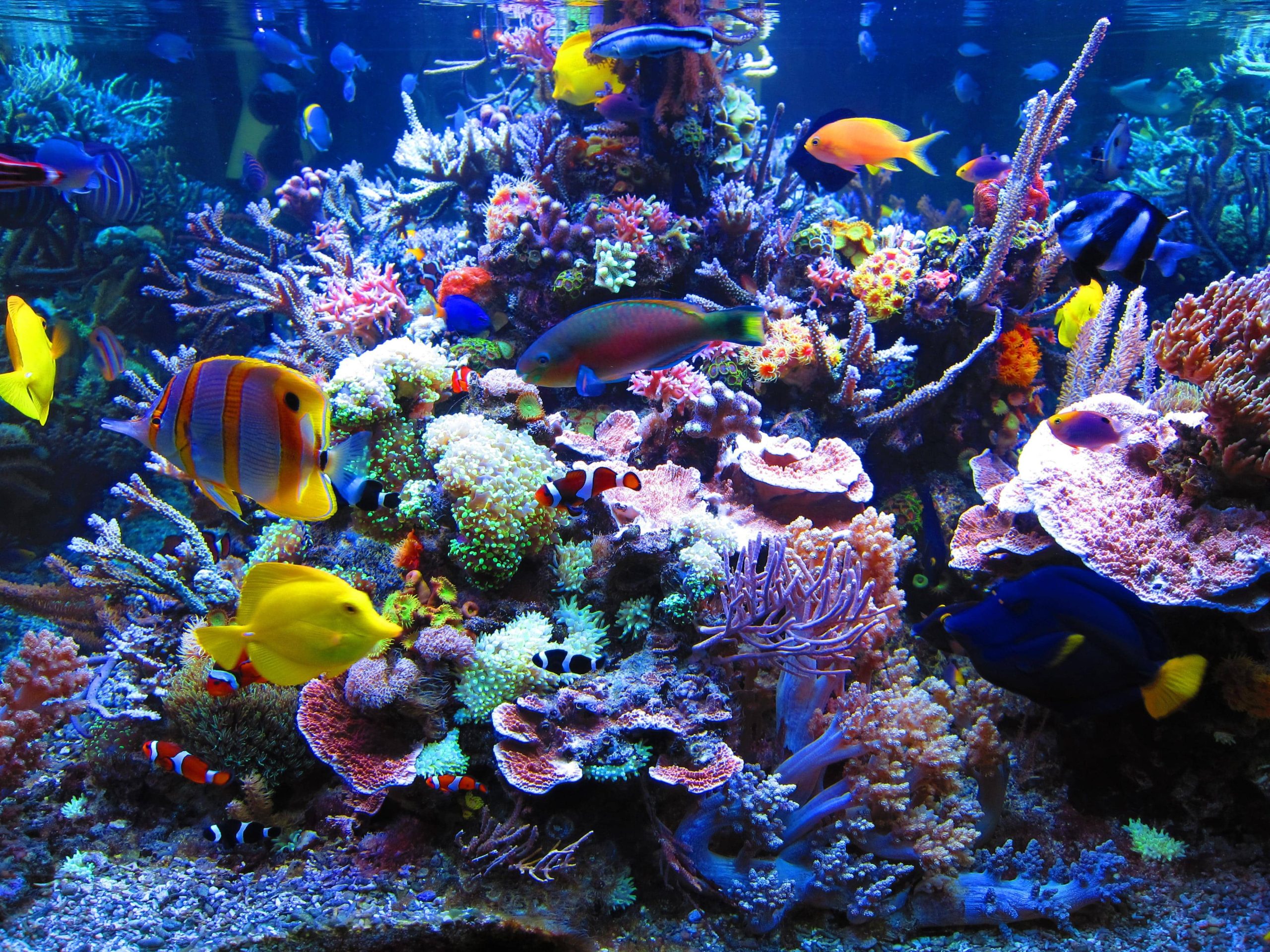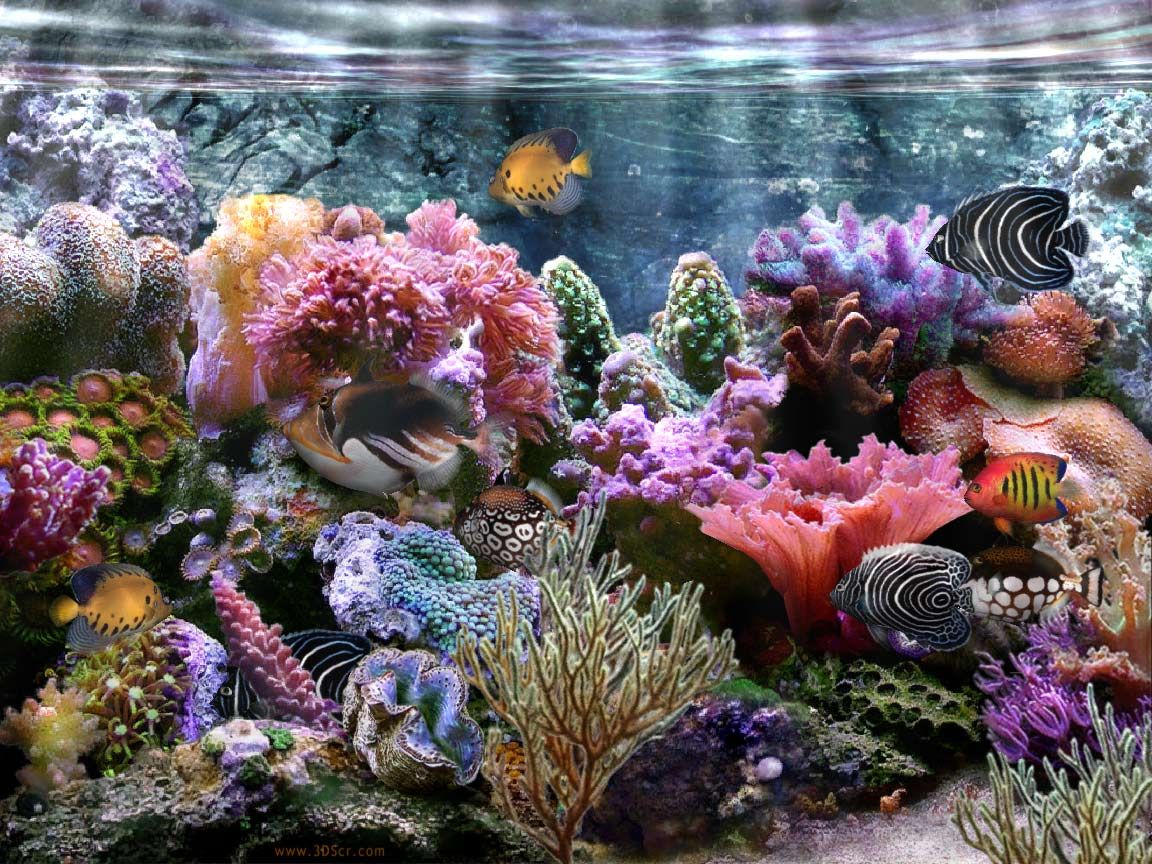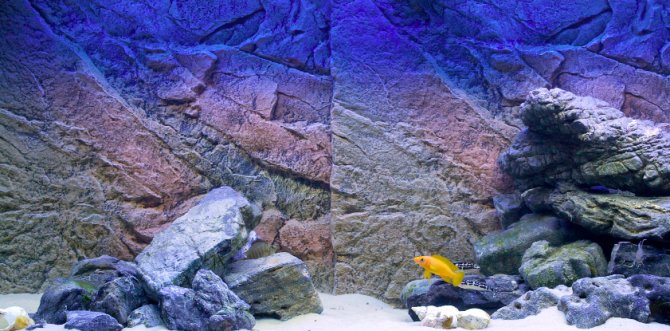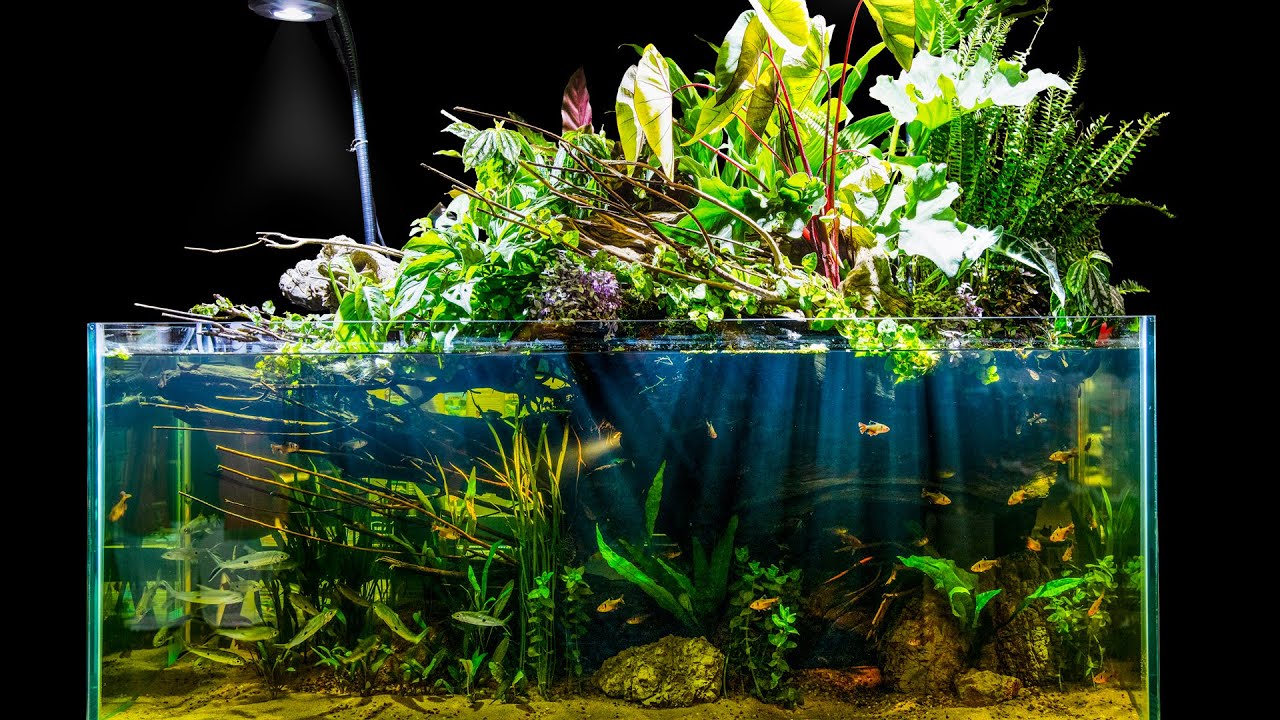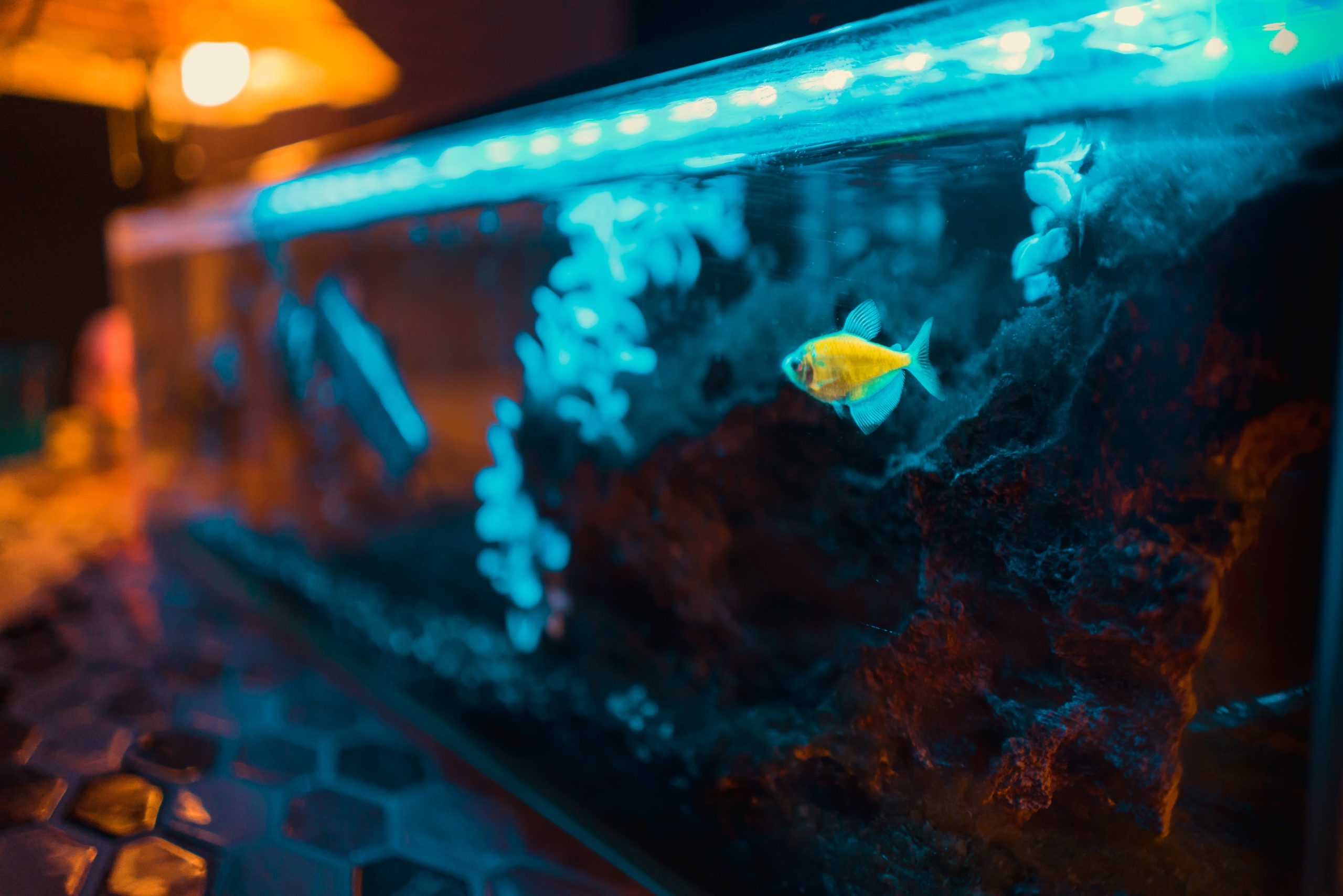You may be wondering what is pH. pH value is the acidity and alkalinity level of the water. Simply put, it is a value that varies depending on the amount of minerals in the water.
While the increase in minerals makes the water basic, its decrease causes the acidity to increase. It is expressed as numbers between 1 and 14. Water with a pH of 7.0 is neutral, meaning it is neither acidic nor alkaline. When the pH drops below 7.0, the water starts to become acidic and when it goes above 7.0, it becomes alkaline.
 So what should the pH value of aquarium water be? The pH value that every aquarium creature is accustomed to living in its natural environment is different. To give an example of some fish species; Guppies are used to living at pH values between 6.8 and 8.5, betta 6.0 and 8.0, neon fish 6.5 and 7.0, tropheus 7.3 to 9.2, and discus between 6.0 and 7.0.
So what should the pH value of aquarium water be? The pH value that every aquarium creature is accustomed to living in its natural environment is different. To give an example of some fish species; Guppies are used to living at pH values between 6.8 and 8.5, betta 6.0 and 8.0, neon fish 6.5 and 7.0, tropheus 7.3 to 9.2, and discus between 6.0 and 7.0.
What could cause the pH value to drop and rise? The pH change can be caused by the base material used, decorations, a new filter or a different water source. For this reason, it is necessary to evaluate the changes it will create before making any changes in the aquarium.
Why Does pH Change in an Aquarium?
Changing the base material or adding base material to a bare bottom aquarium can change the pH value of the water. Therefore, it is necessary to make sure that the base material used is suitable for the fish. For example, no matter how pleasant coral fractures are to the eye; It is mostly suitable for Malawi aquarium, Tanganyika aquarium, and marine aquarium. Because it increases the pH value of the water. Using coral fracture in the Amazon biotope aquarium could be catastrophic. Because Amazon creatures such as corydoras fish, neon tetra, and cardinal tetra are used to living in acidic water.
As in the coral fracture example; Before using mussel shells, rocks, and similar decorations, it is necessary to make sure that they release minerals into the water. In addition, decors that do not give color should be preferred. Because the paint of the decor can be toxic.
Even bona fide water changes can cause pH changes in the aquarium. If you are going to use a different water source or change the filter, it is useful to consider that there may be a serious change in the pH value of the water.
Raising the pH of Aquarium Water
First of all, let’s answer the question of when it is necessary to raise the pH in the aquarium. If you are going to feed one of the popular African Cichlids such as Cyrtocara moorii (dolphin bubble cichlid), tropheus, Labidochromis caeruleus (yellow princess) or Cyphotilapia frontosa; You may need to increase the pH value of the aquarium water. Because these fish living in lakes Malawi and Tanganyika are accustomed to living in alkaline water, that is, in environments where the pH value is above 7.0. Raising the pH in the aquarium becomes a necessity if your water supply is soft.
What happens if the pH value is out of range? Your fish start to experience stress. Stress brings with it diseases because your fish’s immune system is weakened. The weakened immune system will be a good opportunity for opportunistic fungi, bacteria, and parasites.
But what should the pH value of aquarium water be? There is actually no definitive answer to this question. Because the pH value that each aquarium fish needs is different from another. For example, the ideal pH value is 6.8 to 8.5 for guppy fish, 6.0 to 8.0 for siamese fighting fish, and 7.7 to 8.6 for yellow princess fish. Then the pH value should be adjusted according to the fish species to be fed.
If the water source is soft, the pH value should be increased. In addition, the dissolution of feed and organic residues causes a decrease in the pH value. Therefore, the pH value of the aquarium water should be checked regularly and the necessary interventions should be made.
To increase the pH value, you may want to use ready-made chemical products due to their ease of use. This may seem like a practical solution, but it is useful to apply natural methods for the exact solution. Because the misuse of these products causes very sudden changes in pH value and can have serious consequences that can lead to fish death.
pH Raising with Coral Fracture
Most mollusks, including corals, contain calcium carbonate in their skeleton. If the coral fracture is used as a base material, the pH value automatically rises. Because calcium carbonate has such an effect. Coral chips can also be placed in the filter if desired.
After putting the coral shards in your aquarium, measure the pH. If you are getting a measurement above your desired value, reduce the amount of coral fractures. Of course, don’t be in a hurry to take measurements. The pH increase will not be sudden. You have to wait a few hours before you can read the correct value.
pH Raising with Dolomite Stone
You have probably seen the pebbles that appear colorful when placed in the aquarium. You may have thought that they were only used for aesthetic purposes. However, dolomite is a kind of mineral that increases the pH value. It is used to increase the pH value due to its richness in calcium and magnesium.
Dolomite is mostly preferred in marine aquariums. It can be placed inside the filter. However, it will not be easy to clean a filter filled with pebbles. It can be cleaned with the help of a dip broom.
PH Raising with Limestone
Limestone is also rich in calcium carbonate. In this way, it is widely used in both marine and freshwater aquariums. It will be a practical and low-cost solution to adjust the pH value. Of course, it should not be kept in large quantities in the aquarium. Otherwise, it will cause crowding and more importantly, an excessive increase in pH value. Sprinkle medium-sized limestone into the aquarium and watch the results. When you get the pH value you want, don’t add more.
Aragonite, tuffa, oolite, travertine, and the dolomite we mentioned earlier are other limestone stones that can increase the pH value.
pH Raising with Macro Algae
Growing macro algae in an aquarium have many benefits. One of them is balancing the pH value. Because macroalgae absorb carbon dioxide in water and reduce acidity. In addition, it prevents them from overgrowing by fighting food with harmful algae. Another benefit is that it increases the amount of dissolved oxygen in the water.
Growing macroalgae is an easy and inexpensive method. It is much simpler than growing coral. It does not require much maintenance and can adapt to changes in water temperature. There is no need for a special lighting system for macroalgae. It can reproduce even in low light. It is much more advantageous than corals in terms of sustainability. It is also an additional food source for some fish such as yellow tang.
pH Raising with Chemicals
For temporary problems, you can use chemical pH increasing products. However, balancing the softness of the water supply with ready-made products will be both troublesome and costly. Instead, we recommend that you choose one of the natural techniques we will talk about.
Lowering the pH of Aquarium Water
There are various natural techniques to lower the pH in the aquarium, as well as the use of chemicals. However, the first choice should always be natural methods.
pH Lowering with Driftwood
Natural methods are very simple to apply. In addition, it does not harm aquarium life by causing sudden changes. One of them is to use driftwood. A piece of driftwood will make the aquarium look more beautiful and reduce the pH value of the water. Of course, it should be kept in water for a few weeks or sterilized by boiling before use in the aquarium. When kept in water, it should remain completely in water. There are also tree roots sold for reptile terrariums. However, they may contain harmful chemicals.
pH Lowering with Peat
The use of peat is another method that allows the pH value to decrease naturally. However, it causes a change in watercolor. Aquarists using peat recommend keeping it in a separate bucket for a few days before putting it in the aquarium. Otherwise, the aquarium water will be yellowish in color.
So how is peat used? You need to place the peat inside the filter. Thus, it will both act as a second strainer and decrease the pH value of the water. You can place it in a filter bag or ladies’ socks, or simply put it in the filter. Whether natural or processed, the peat will lower its pH value over time. After a few trials and errors, you will know how much peat to use.
pH Lowering with Catappa
Catappa both softens the water and lowers the pH value. Since it will give some tannin to the water, you may want to soak it before using it and lose its color. Of course, it does not cause too much color change in water. If you are going to feed tetra fish, you can ignore the slightly thickened water. Because tetra species are used to living in dim waters.
It is said that the use of almond leaves has benefits other than lowering the pH value. Although it has not yet been proven by clinical research, almond leaf makes aquarium fish healthier. Thanks to its antioxidant and anti-inflammatory effect, it prevents diseases and contributes to the treatment of existing diseases.
pH Lowering with Reverse Osmosis Filter
Another method to lower the pH in the aquarium is to use a reverse osmosis filter (RO filter). Thanks to the reverse osmosis filter, large ions such as lead and chlorine in the water are separated, while smaller ions are allowed to pass through the membrane of the filter. Thanks to this, the water becomes softer. Although somewhat costly, it is most effective in situations where the water source is rich in minerals. Naturally, the water is deionized.
Thanks to the RO filter (Reverse Osmosis), the pH value is fixed and the pollution in the water is cleaned by 99%. Although the filter needs to be changed at regular intervals, it is perfect for those looking for a long-term solution.
pH Lowering with Chemicals
It is up to you which method you choose to lower the pH in the aquarium. If all these methods seem troublesome to you, you can use chemical products. pH reducing products are produced for this purpose. You can use any brand of ph reducer by following the instructions for use.
Conclusion
Sometimes pH decrease or increase can be seen in our aquariums for various reasons. Sometimes the pH of the tap water may not be suitable for the creatures in our aquarium. In such cases, we may need to raise or lower the pH of the water. In our article, we have covered methods for both lowering and increasing the pH value. In general, we recommend that you adjust the pH value with natural methods. We do not recommend the use of chemical products except in temporary situations.

